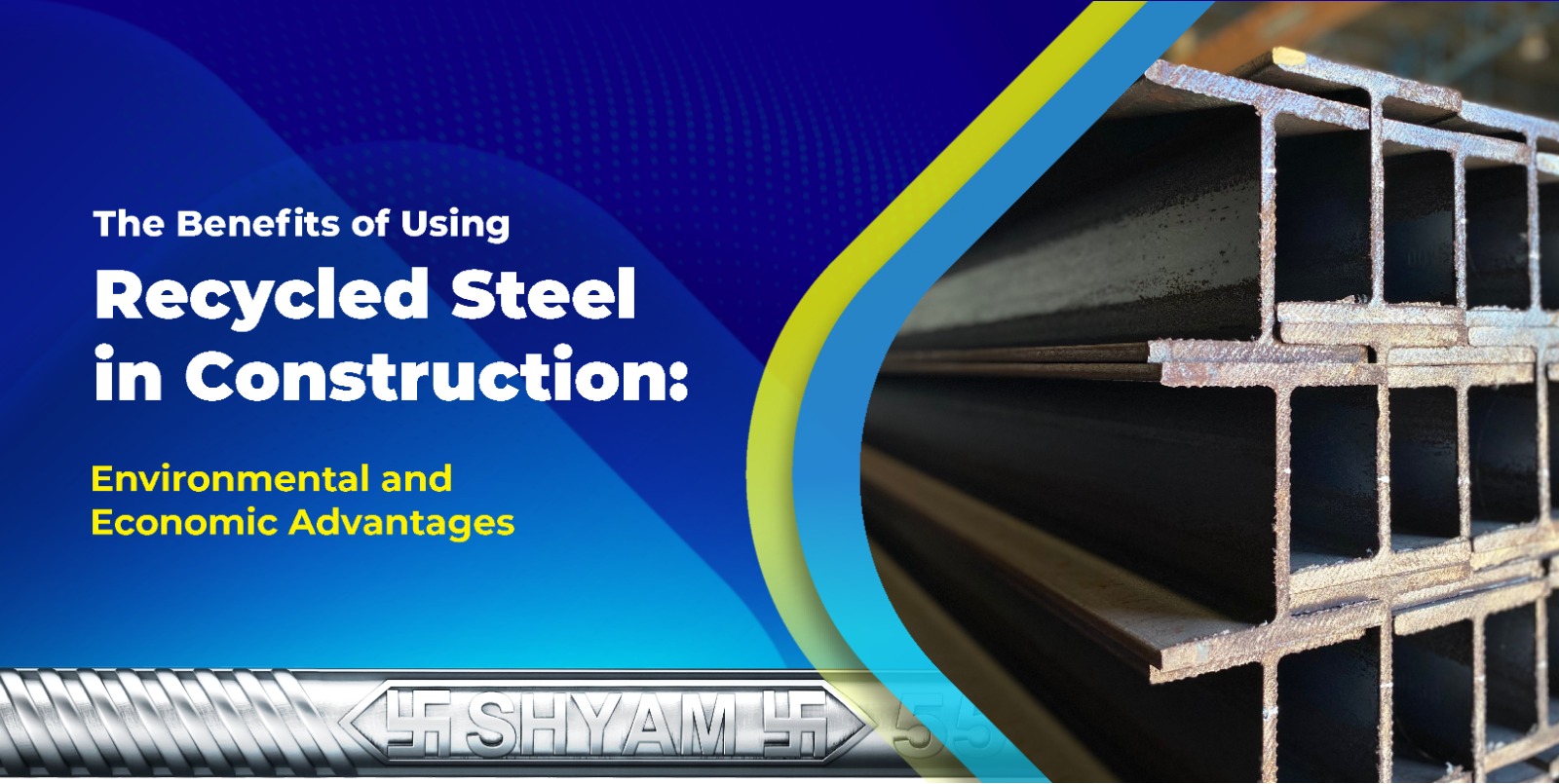The Benefits of Using Recycled Steel in Construction: Environmental and Economic Advantages
In an era where sustainability is paramount, the TMT saria manufacturer in Manipur is increasingly turning to recycled steel as a viable and eco-friendly building material. This shift brings forth a myriad of benefits, not only for the environment but also for the economic landscape of construction projects. Let’s delve into the advantages of incorporating recycled steel into construction practices.
1. Environmental Stewardship: Reducing Carbon Footprint
Utilizing recycled steel significantly contributes to environmental sustainability by curbing the need for raw iron ore extraction and traditional steel manufacturing processes. Producing fresh steel from iron ore is an energy-intensive process, releasing substantial carbon dioxide emissions. In contrast, recycling steel requires less energy along with producing fewer greenhouse gas emissions, making it a vital choice in efforts to reduce the construction industry’s carbon footprint.
- Environmental Impact: Beyond reducing emissions, the adoption of recycled steel through best building supplies in Manipur helps preserve natural habitats, reduces water usage, and minimizes ecological disturbances associated with traditional steel production.
- Regenerative Practices: Incorporating recycled steel aligns with regenerative practices, promoting the restoration and replenishment of ecosystems affected by mining and industrial activities.
2. Conservation of Resources: Extending the Lifespan of Steel
Recycled steel is essentially a perpetual resource that can be reused over and again without compromising its quality or strength with the help of top construction companies in Manipur. By choosing recycled steel, construction projects actively contribute to the conservation of natural resources, as it diminishes the demand for virgin steel production. This approach goes parallely with the principles of a circular economy, where materials are reused, reducing the overall strain on finite resources.
- Circular Economy: Embracing recycled steel embodies the principles of a circular economy, promoting resource efficiency and minimizing waste by keeping materials in use for as long as possible.
- Resource Diversity: Reduced dependence on virgin steel extraction diversifies resource utilization, decreasing the impact on ecosystems and fostering a more resilient material supply chain.
3. Energy Efficiency: Lowering Energy Consumption
The production of steel from raw materials demands substantial energy inputs. Incorporating recycled steel into construction processes with the help of building construction materials in Manipur requires significantly less energy, as the recycled material has already undergone the energy-intensive manufacturing phase. This not only reduces energy consumption but also lessens the reliance on fossil fuels, aligning construction practices with the broader goals of sustainable energy use.
- Energy Conservation: Using recycled steel helps conserve energy resources, contributing to global efforts to make a shift towards renewable energy sources and cut down the reliance on non-renewable fuels.
- Cleaner Production: The lower energy requirements for recycling steel translate into reduced air pollution, minimizing the environmental impact associated with energy-intensive manufacturing.
4. Economic Benefits: Cost-Effective and Sustainable Solutions
While prioritizing sustainability, the use of recycled steel also brings economic advantages to construction projects. Recycled steel is often more cost-effective than newly manufactured steel, presenting an opportunity for builders and developers to achieve both financial savings and environmental stewardship. Additionally, as sustainable practices become more ingrained in construction norms, using recycled materials can enhance a project’s marketability and reputation.
- Financial Savings: The cost-effectiveness of recycled steel offers a competitive edge, allowing construction projects to achieve budgetary goals while contributing to sustainable practices.
- Marketability: Embracing recycled materials aligns with the growing consumer demand for environmentally conscious construction, enhancing the marketability and perceived value of projects.
5. Waste Reduction: Minimizing Construction Impact
The construction industry is a significant contributor to waste generation. Incorporating recycled steel minimizes the environmental impact of construction activities by diverting steel waste from landfills. This waste reduction not only conserves valuable landfill space but also addresses concerns related to the environmental consequences of steel disposal.
- Landfill Impact: Choosing recycled steel helps reduce the burden on landfills, where traditional construction waste, including steel scraps, contributes to environmental degradation.
- Circular Waste Management: Implementing recycled steel aligns with circular waste management principles, breaking the linear model of “take, make, dispose” in favor of a more sustainable, closed-loop approach.
6. Structural Integrity: Recycled Steel’s Uncompromised Strength
Contrary to misconceptions, recycled steel maintains the same structural integrity and performance as newly manufactured steel. Rigorous quality control measures ensure that recycled steel meets or exceeds industry standards, making it a trustworthy and long lasting for a wide range of construction applications.
- Quality Assurance: Stringent quality control in the recycling process ensures that recycled steel meets or exceeds industry standards, providing assurance of structural integrity and reliability.
- Adaptability: Recycled steel’s consistent strength and performance make it adaptable to various construction needs, from residential buildings to complex industrial structures.
In conclusion, the adoption of recycled steel in construction is a multifaceted strategy offering environmental benefits, economic advantages, and a sustainable solution for the industry’s future. By choosing recycled steel, construction projects not only contribute to a healthier planet but also set a precedent for responsible and forward-thinking building practices.

